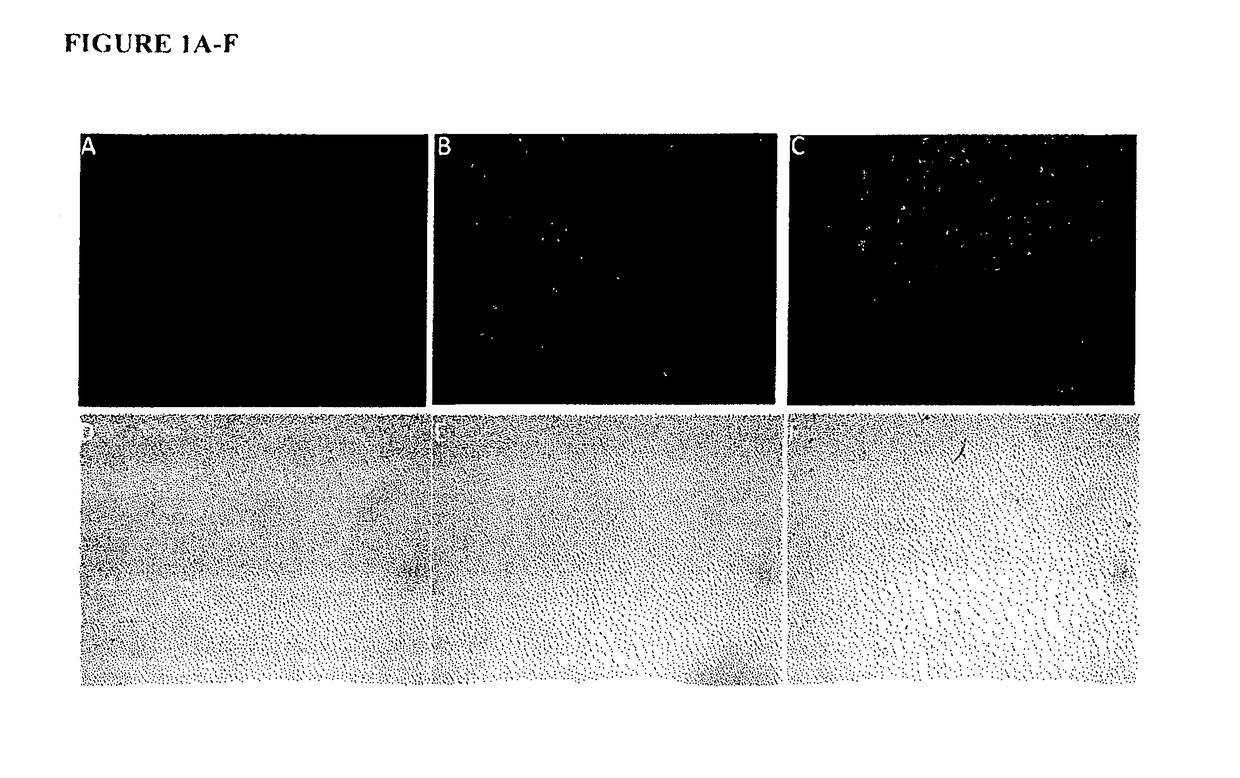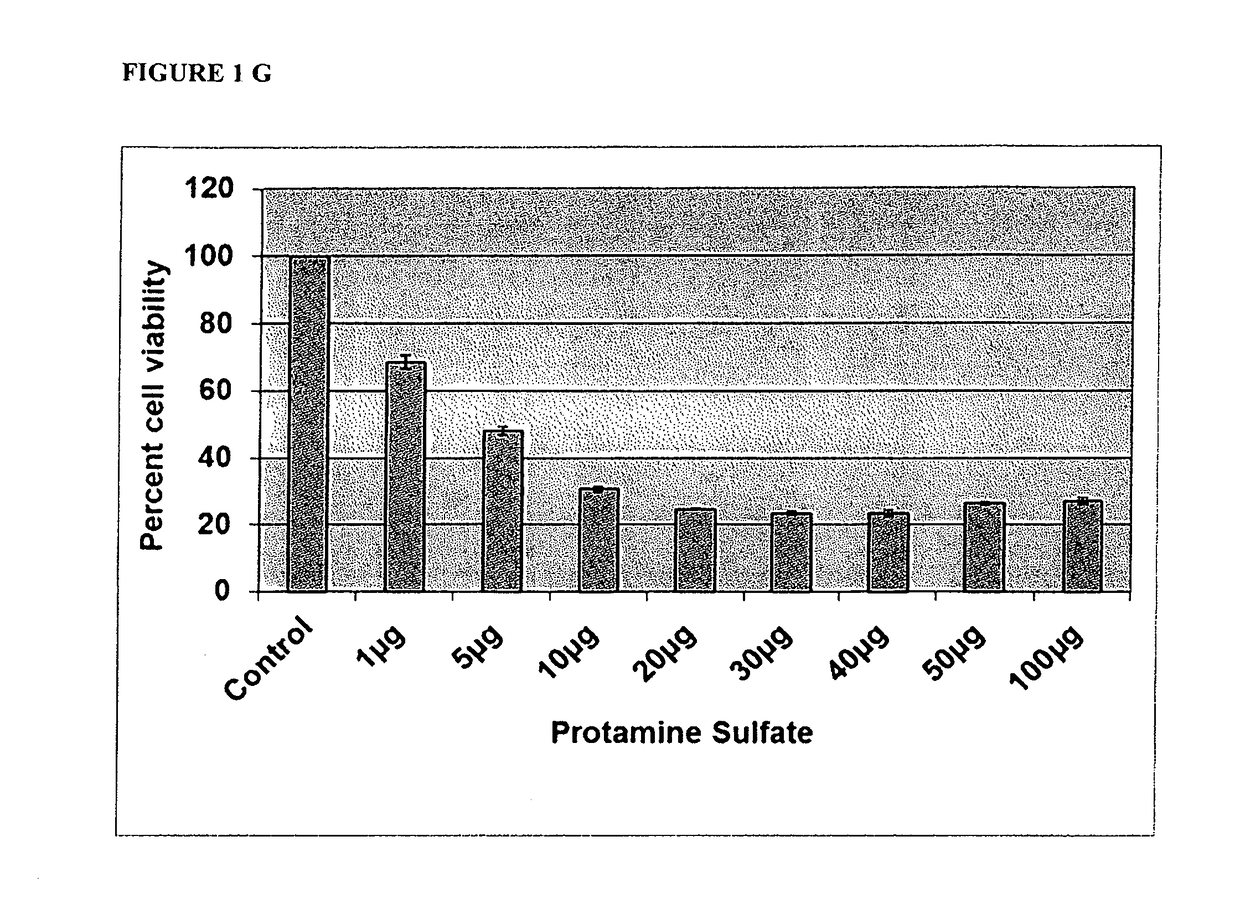Peptide-mediated intravesical delivery of therapeutic and diagnostic agents
a technology applied in the field of peptide-mediated intravesical delivery of therapeutic and diagnostic agents, can solve the problems of hampered drug development of this approach, unable to achieve the effect of non-cancerous diseased condition, and relying on concentration gradients to achieve the effect of facilitating the delivery of the agen
- Summary
- Abstract
- Description
- Claims
- Application Information
AI Technical Summary
Benefits of technology
Problems solved by technology
Method used
Image
Examples
working example
[0043]The present study describes the use of a new carrier for ODN, Protamine, which has been used as a component in the delivery system for gene and ODN in the past, but not in this context [14]. Protamine is highly stable, well characterized and is used clinically as an antidote to heparin overdoses and a complexing agent for insulin in long-acting preparations[15]. It has, however, been reported to have toxic effects when instilled into bladder at relatively higher concentration [21-23].
[0044]A. Methods
[0045]Oligonucleotides: The 18mer phosphorothioated antisense oligonucleotide (ODN) was used in all experiments with the sequence 5′GCCCGAGACGCCTCCCGA 3′ (SEQ ID NO: 10), which was directed against unique sequence in exon 3 of rat NGF mRNA and was custom made by Integrated DNA technologies (San Diego, Calif.). ODN had a 5′ tag of TYE™ 563 for uptake studies. Stock solution of HPLC grade ODN was prepared at 2 mM in nuclease free distilled water (Invitrogen, Grand Island, N.Y., USA)....
PUM
| Property | Measurement | Unit |
|---|---|---|
| concentration | aaaaa | aaaaa |
| concentration | aaaaa | aaaaa |
| concentration | aaaaa | aaaaa |
Abstract
Description
Claims
Application Information
 Login to View More
Login to View More - R&D
- Intellectual Property
- Life Sciences
- Materials
- Tech Scout
- Unparalleled Data Quality
- Higher Quality Content
- 60% Fewer Hallucinations
Browse by: Latest US Patents, China's latest patents, Technical Efficacy Thesaurus, Application Domain, Technology Topic, Popular Technical Reports.
© 2025 PatSnap. All rights reserved.Legal|Privacy policy|Modern Slavery Act Transparency Statement|Sitemap|About US| Contact US: help@patsnap.com



